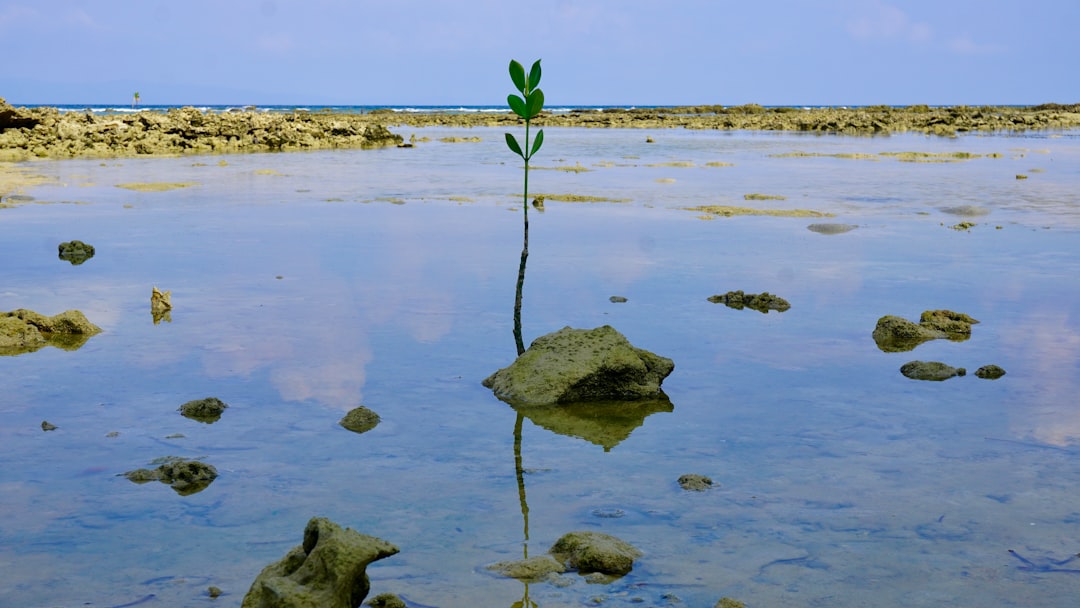The East Side Coastal Project (ESCP) represents a significant initiative aimed at enhancing the resilience of New York City’s East Side against the threats posed by climate change, particularly rising sea levels and increased flooding.
The project encompasses a comprehensive strategy that integrates infrastructure improvements, community engagement, and environmental sustainability, all while addressing the pressing need for climate adaptation in urban settings.
As urban areas continue to grapple with the realities of climate change, the ESCP stands out as a proactive response to these challenges. By focusing on a specific geographic area that has been identified as at risk, the project aims not only to safeguard lives and property but also to enhance the overall quality of life for residents. The East Side Coastal Project is not merely a construction endeavor; it is a holistic approach that seeks to create a resilient urban environment capable of withstanding future climate-related adversities.
Key Takeaways
- The East Side Coastal Project aims to build resilience in coastal areas through infrastructure and design features.
- Community involvement and engagement are key components of the project, ensuring local input and support.
- Environmental impact and sustainability considerations are integrated into the project’s goals and objectives.
- Collaboration with local and state government agencies is essential for the success of the East Side Coastal Project.
- Anticipated benefits of the project include increased protection from coastal hazards and long-term positive impacts on the community.
The Importance of Building Resilience in Coastal Areas
Building resilience in coastal areas has become an imperative in light of the increasing frequency and severity of climate-related events. Coastal regions are particularly vulnerable to flooding, storm surges, and erosion, which can lead to devastating consequences for communities, economies, and ecosystems. The East Side Coastal Project recognizes that without adequate measures in place, these areas will continue to face existential threats that could undermine their very foundations.
Resilience is not just about physical infrastructure; it encompasses social, economic, and environmental dimensions as well. A resilient coastal community is one that can adapt to changing conditions while maintaining its core functions and services. This involves investing in robust infrastructure, fostering community engagement, and promoting sustainable practices that protect natural resources.
The ESCP aims to create a model for resilience that can be replicated in other vulnerable coastal areas, demonstrating the importance of a multifaceted approach to climate adaptation.
The Goals and Objectives of the East Side Coastal Project

The primary goals of the East Side Coastal Project are centered around enhancing flood protection, improving public spaces, and fostering community resilience. One of the foremost objectives is to construct a series of protective measures, such as berms and floodwalls, designed to shield neighborhoods from storm surges and rising waters. These structures will not only serve as barriers against flooding but will also be integrated into the urban landscape in a way that enhances accessibility and aesthetics.
In addition to physical protection, the ESCP aims to promote community engagement and education regarding climate resilience. By involving local residents in the planning process, the project seeks to ensure that the needs and concerns of the community are addressed. This participatory approach fosters a sense of ownership among residents, empowering them to take an active role in shaping their environment.
Ultimately, the goals of the East Side Coastal Project extend beyond mere infrastructure; they encompass a vision for a resilient and vibrant community that can thrive in the face of adversity.
Community Involvement and Engagement in the Project
| Metrics | Data |
|---|---|
| Number of community events organized | 15 |
| Number of community members engaged | 200 |
| Number of volunteer hours contributed | 500 |
| Feedback received from community members | Positive |
Community involvement is a cornerstone of the East Side Coastal Project, reflecting a commitment to inclusivity and transparency throughout the planning and implementation phases. Engaging local residents not only helps to identify specific needs and priorities but also builds trust between project leaders and the community. Various outreach initiatives have been organized, including public meetings, workshops, and informational sessions designed to educate residents about the project’s objectives and gather feedback.
The project team has made concerted efforts to reach out to diverse community groups, ensuring that voices from all segments of the population are heard. This engagement process has allowed residents to express their concerns about flooding and other climate-related issues while also providing input on design features that would enhance public spaces. By fostering an open dialogue, the East Side Coastal Project aims to create a sense of shared responsibility among community members, encouraging them to become advocates for resilience in their neighborhoods.
Environmental Impact and Sustainability Considerations
The East Side Coastal Project places a strong emphasis on environmental impact and sustainability throughout its planning and execution. Recognizing that coastal ecosystems play a vital role in mitigating flooding and supporting biodiversity, the project incorporates natural solutions alongside traditional engineering approaches. This includes restoring wetlands and creating green spaces that can absorb excess water during heavy rainfall or storm surges.
Sustainability considerations extend beyond environmental restoration; they also encompass energy efficiency and resource conservation in construction practices. The project aims to utilize sustainable materials and methods that minimize carbon footprints while maximizing durability. By prioritizing environmentally friendly practices, the East Side Coastal Project not only addresses immediate flood risks but also contributes to long-term ecological health and resilience.
Infrastructure and Design Features of the East Side Coastal Project

The infrastructure and design features of the East Side Coastal Project are carefully crafted to provide effective flood protection while enhancing public spaces. Key components include elevated berms, floodwalls, and strategically placed barriers designed to redirect stormwater away from vulnerable areas. These structures are not merely utilitarian; they are designed with aesthetics in mind, incorporating landscaping elements that blend seamlessly with the urban environment.
In addition to protective measures, the project includes improvements to parks and recreational areas along the waterfront. These enhancements aim to create vibrant public spaces that encourage community interaction while serving as critical components of the overall flood protection strategy. By integrating recreational facilities with resilience measures, the East Side Coastal Project seeks to foster a sense of community pride while ensuring safety during extreme weather events.
Funding and Financing of the Project
Securing funding for large-scale infrastructure projects like the East Side Coastal Project is a complex endeavor that requires collaboration among various stakeholders. The project has garnered financial support from multiple sources, including federal grants, state funding, and private investments. This diversified funding approach not only helps mitigate financial risks but also demonstrates broad support for climate resilience initiatives.
In addition to traditional funding sources, innovative financing mechanisms are being explored to ensure long-term sustainability. Public-private partnerships may play a crucial role in financing ongoing maintenance and operational costs associated with the project. By leveraging diverse funding streams, the East Side Coastal Project aims to establish a robust financial foundation that supports its ambitious goals while ensuring accountability and transparency throughout its lifecycle.
Potential Challenges and Obstacles in Building Resilience
While the East Side Coastal Project represents a proactive approach to climate resilience, it is not without its challenges. One significant obstacle is navigating regulatory frameworks and securing necessary permits from various governmental agencies. The complexity of these processes can lead to delays in project timelines and increased costs.
Additionally, balancing community interests with technical requirements poses another challenge that requires careful negotiation. Public perception can also be a hurdle; some residents may be skeptical about the effectiveness of proposed measures or concerned about potential disruptions during construction. Addressing these concerns through transparent communication and ongoing engagement is essential for building trust within the community.
The project team must remain adaptable and responsive to feedback while maintaining focus on its overarching goals of resilience and sustainability.
Collaboration with Local and State Government Agencies
Collaboration with local and state government agencies is integral to the success of the East Side Coastal Project. By working closely with various stakeholders, including city planners, environmental organizations, and emergency management officials, the project team can ensure that all aspects of resilience are considered in planning efforts. This collaborative approach fosters a comprehensive understanding of regional challenges while leveraging existing resources and expertise.
Moreover, partnerships with governmental agencies can facilitate access to funding opportunities and technical assistance that may otherwise be unavailable. Engaging with local authorities also helps align project goals with broader citywide initiatives aimed at addressing climate change impacts. Through these collaborative efforts, the East Side Coastal Project aims to create a cohesive strategy that enhances resilience across multiple sectors.
Timeline and Milestones for the East Side Coastal Project
The timeline for the East Side Coastal Project is structured around key milestones that guide its progress from planning through implementation. Initial phases involve extensive community engagement and environmental assessments aimed at identifying specific vulnerabilities within the area. Following this groundwork, detailed design plans will be developed, incorporating feedback from residents and stakeholders.
As construction begins, regular updates will be provided to keep the community informed about progress and any potential disruptions. The project team anticipates completing major infrastructure components within several years while simultaneously implementing interim measures that provide immediate benefits during construction phases. By adhering to this timeline, the East Side Coastal Project aims to deliver tangible results that enhance resilience in a timely manner.
Anticipated Benefits and Long-Term Impacts of the Project
The anticipated benefits of the East Side Coastal Project extend far beyond immediate flood protection; they encompass long-term social, economic, and environmental impacts that will shape the future of the community. By investing in resilient infrastructure, residents can expect enhanced safety during extreme weather events, reducing risks associated with flooding and property damage. Moreover, improved public spaces will foster community interaction and promote healthier lifestyles through increased access to recreational facilities.
The project is expected to stimulate local economies by attracting visitors and businesses drawn by enhanced waterfront amenities. Ultimately, the East Side Coastal Project aims not only to protect against climate threats but also to create a thriving urban environment where residents can flourish amidst changing conditions.
The East Side Coastal Resiliency Project is a significant initiative aimed at protecting New York City’s Lower East Side from the impacts of climate change, particularly rising sea levels and increased storm surges. A related article that delves into the broader implications of such urban resilience projects can be found on MyGeoQuest. This article provides insights into how cities worldwide are adapting to environmental challenges and the innovative strategies being employed to safeguard urban areas. For more detailed information, you can read the article by visiting this link.
WATCH THIS! The Real Cost of NYC Living: Your Wallet, Sanity, and Subway Survival Skills
FAQs
What is the East Side Coastal Resiliency Project?
The East Side Coastal Resiliency Project is a major infrastructure initiative in New York City aimed at protecting the East Side of Manhattan from the impacts of climate change and sea level rise.
What are the main goals of the East Side Coastal Resiliency Project?
The main goals of the project are to reduce the risk of flooding, enhance coastal defenses, and improve the overall resilience of the East Side community to future climate-related events.
What are some key features of the East Side Coastal Resiliency Project?
Key features of the project include the construction of flood protection infrastructure such as flood walls, levees, and berms, as well as the creation of new waterfront parks and open spaces for the community to enjoy.
How will the East Side Coastal Resiliency Project benefit the community?
The project is expected to provide increased protection against storm surges and flooding, improve access to the waterfront, enhance recreational opportunities, and contribute to the overall quality of life for residents and visitors to the East Side.
When is the East Side Coastal Resiliency Project expected to be completed?
The project is currently underway and is expected to be completed in phases over the next several years, with the full completion anticipated in the near future.
